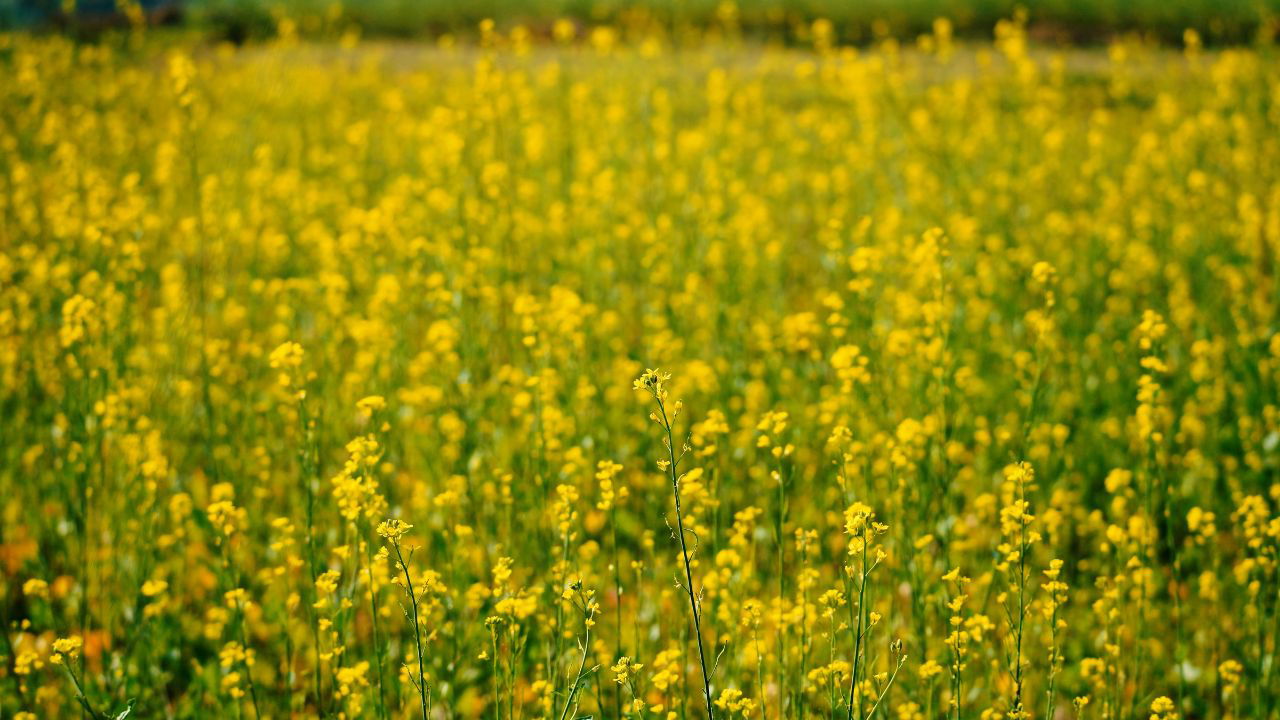
Mustard is a crucial crop for Indian agriculture, primarily grown for its seeds, which are used to produce mustard oil—a staple in Indian cooking. India is one of the largest producers of mustard globally. It is a rabi crop, meaning it is sown in the winter and harvested in spring. Mustard cultivation supports many small and marginal farmers, providing essential employment and enhancing their livelihoods.
The Pusa Double Zero Mustard 31 (PDZ Mustard 31), developed in 2015 by the Division of Genetics at ICAR, New Delhi, represents a significant advancement in this field. This revolutionary variety boasts high-yield potential, disease resistance, and regional adaptability, along with improved oil and seed meal quality (Canola quality), catering to the evolving needs of farmers and consumers alike.
PDZ-1: India’s First Double Zero Mustard for Canola Quality
The boon to this crop is PDZ-1 [Pusa Double Zero Mustard-31(PDZM-31)], the first Double Zero (erucic acid <2% and glucosinolates<30ppm) yellow-seeded Indian mustard [Brassica juncea (L.)]. Rapeseed-mustard varieties that fulfil the low erucic acid (<2%) guidelines are often referred to as single zero, while those that also have a glucosinolate content of less than 30 mol/g in the oil-free meal are known as double zero or simply "canola" types.
Canola belongs to the Brassica plant family as does mustard, broccoli, Brussels sprouts, and cauliflower to produce canola oil and meal. It is valued for its beneficial effects on heart health, containing the lowest amount of saturated fat among popular cooking oils.
Essential Characteristics of Pusa Double Zero Mustard-31
This Variety yields up to 2379 kg/ha, matures in 140–144 days, resists major diseases, and tolerates drought and frost, ensuring reliable harvests.
1. High Yield and Early Maturity
-
PDZ Mustard 31 is known for its exceptional yield, the potential yield of PDZM-31 has been recorded up to 2379 kg/ha which is significantly more harvested per hectare than traditional varieties also having more than 40% oil content.
-
It matures early, typically in 140–144 days, allowing farmers to plan for the next crop cycle efficiently. This shorter growth period is a boon for farmers practicing multiple cropping systems.
2. Tolerance and Resistance
-
One of the standout traits of PDZ Mustard 31 is its resistance to common mustard diseases such as white rust and Alternaria blight.
-
It is also reasonably resistant to shattering.
-
Its ability to withstand environmental stresses, including moderate drought and frost, ensures a stable and dependable harvest even under challenging conditions.
3. Recommended Areas to Grow
Recommended for national capital region i.e. Rajasthan (North and Western parts), Punjab, Haryana, Delhi, Western Uttar Pradesh Plains of Jammu & Kashmir, and Himachal Pradesh.
By cultivating PDZ Mustard 31, farmers can benefit from improved productivity and reduced dependency on chemical inputs. Furthermore, its low erucic acid and glucosinolate content make it ideal for edible oil production, aligning with consumer health preferences. This forward-thinking variety addresses farming challenges and supports sustainable agricultural development, making it a top choice for mustard growers across India.
(Source: https://ztmbpd.iari.res.in/technologies/varietieshybrids/oil-seeds/mustard/)
















